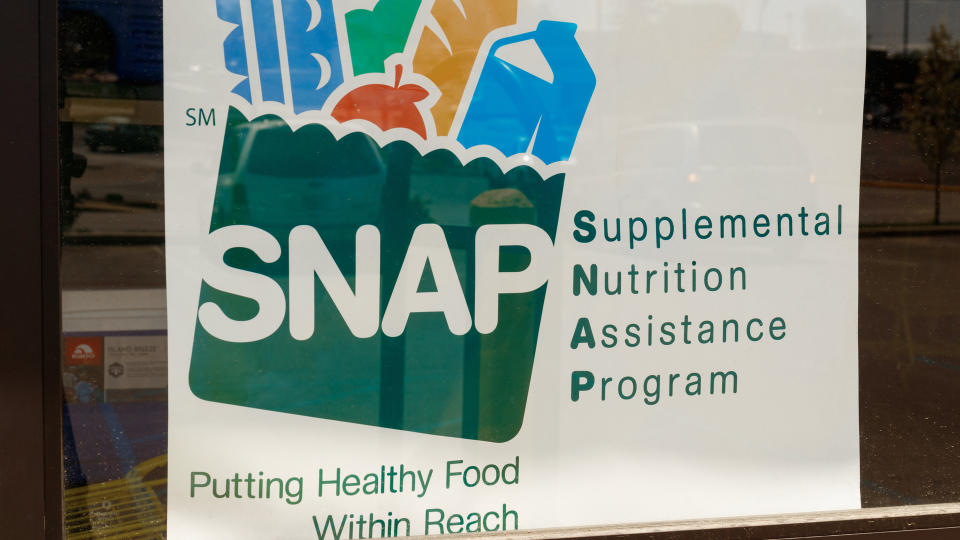Food Stamps: 4 Major Changes to SNAP Coming in 2024

The Supplemental Nutrition Assistance Program (SNAP) is the largest federal nutrition assistance program, which provides benefits to eligible low-income individuals and families via an Electronic Benefits Transfer (EBT) card.
The U.S. Department of Agriculture (USDA) Food and Nutrition Service oversees SNAP, and according to the Center on Budget and Policy Priorities (CBPP), the program improves food security, offers benefits that enable families to purchase healthier diets, and frees up resources that can be used for health-promoting activities and needed medical care.
Food Stamps: SNAP Benefits Will Increase in 2024
Find Out: What To Do If You Owe Back Taxes to the IRS
“SNAP reduces the overall prevalence of food insecurity by as much as 30% and is even more effective among children and those with [children],” the CBPP notes.
The USDA adjusts SNAP maximum allotments, deductions and income eligibility standards at the beginning of each federal fiscal year. The fiscal year begins on Oct. 1, and the changes are based on changes in the cost of living — the amount of money needed to support a basic standard of living, according to the department.
Last month, SNAP benefits increased, yet, eligibility requirements are also set to change, following the Fiscal Responsibility Act (FRA) signed by President Joe Biden in June.
Here are some of the changes.
Sponsored: Owe the IRS $10K or more? Schedule a FREE consultation to see if you qualify for tax relief.
Eligibility and Age
The FRA gradually increases the age of what the USDA calls “able-bodied adults without dependents” (ABAWD) time limit and adds new groups of individuals who are excepted from the ABAWD time limit.
Prior to September, ABAWDs’ 18 to 50 had work requirements, which included working at least 80 hours a month, participating in a work program at least 80 hours a month or participating in a combination of work and work program hours for a total of at least 80 hours a month.
As of Oct. 1, these work requirements expanded to age 52, and requirements will expand to age 54 starting in October 2024, according to the USDA.
Exemptions
There are some exemptions to the ABAWD work requirements, according to the USDA.
For instance, you are excused if you are unable to work due to a physical or mental limitation, if you are pregnant, if you are a veteran, are homeless, or age 24 or younger and in foster care on your 18th birthday.
Income Eligibility
You are eligible for SNAP benefits if you do not exceed the following gross monthly income limit — 130% of the federal poverty level — qualifications:
Household Size: 1
48 States, District of Columbia, Guam, Virgin Islands: $1,580
Alaska: $1,973
Hawaii: $1,817
Household Size: 2
48 States, District of Columbia, Guam, Virgin Islands: $2,137
Alaska: $2,670
Hawaii: $2,457
Household Size: 3
48 States, District of Columbia, Guam, Virgin Islands: $2,694
Alaska: $3,366
Hawaii: $3,098
Household Size: 4
48 States, District of Columbia, Guam, Virgin Islands: $3,250
Alaska: $4,063
Hawaii: $3,738
Household Size: 5
48 States, District of Columbia, Guam, Virgin Islands: $3,807
Alaska: $4,760
Hawaii: $4,378
Household Size: 6
48 States, District of Columbia, Guam, Virgin Islands: $4,364
Alaska: $5,456
Hawaii: $5,018
Household Size: 7
48 States, District of Columbia, Guam, Virgin Islands: $4,921
Alaska: $6,153
Hawaii: $5,659
Household Size: 8
48 States, District of Columbia, Guam, Virgin Islands: $5,478
Alaska: $6,849
Hawaii: $6,299
Each Additional Member
48 States, District of Columbia, Guam, Virgin Islands: $557
Alaska: $697
Hawaii: $641
Maximum Allotments
According to the cost of living adjustments (COLA) for 2024, maximum allotments have increased for the 48 contiguous states and the District of Columbia, Alaska, Guam and the U.S. Virgin Islands.
For instance, the maximum allotment for a family of four in the 48 states and D.C. will be $973, while it will range from $1,248 to $1,937 in Alaska. The maximum allotment for a family of four will be $1,434 in Guam and $1,251 in the U.S. Virgin Islands.
Meanwhile, maximum allotments for a family of four in Hawaii will decrease to $1,759.
The minimum benefit for the 48 states and D.C. is unchanged from 2023 at $23.
Here are the maximum allotments for SNAP in the 48 contiguous states and D.C. — Oct. 2023 to Sep. 2024 — according to the USDA:
Household size 1: $291
Household size 2: $535
Household size 3: $766
Household size 4: $973
Household size 5: $1,155
Household size 6: $1,386
Household size 7: $1,532
Household size 8: $1,751
Each additional person: $219
More From GOBankingRates
I'm a Costco Superfan: These Are the 5 Highest-Quality Kirkland Food Items
This Is One of the Smartest Things You Can Do If You Carry a Credit Card Balance Every Month
This article originally appeared on GOBankingRates.com: Food Stamps: 4 Major Changes to SNAP Coming in 2024
